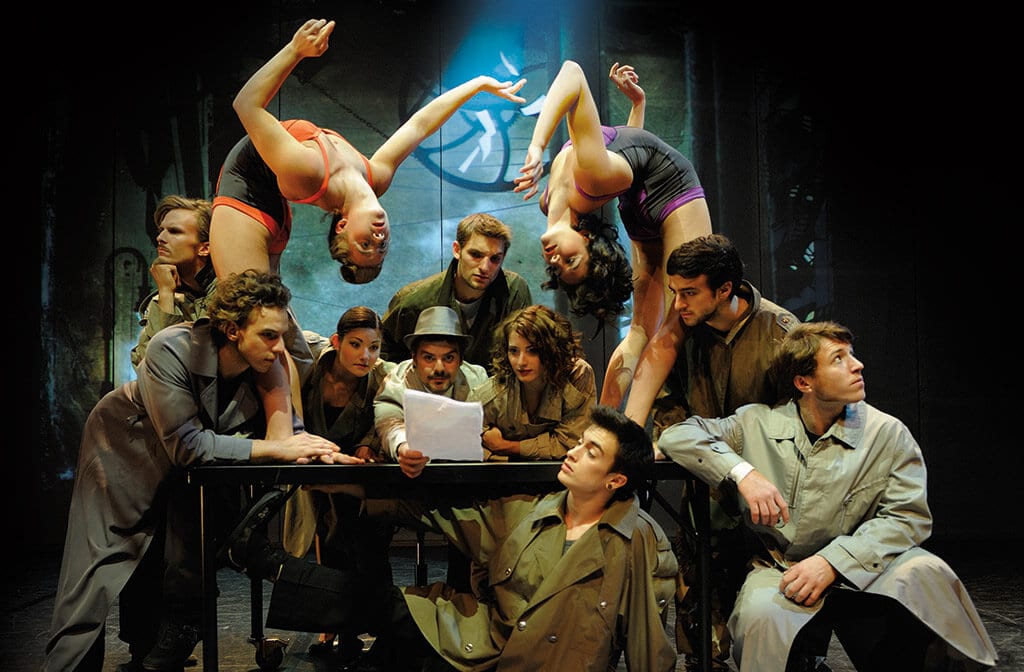This slice of cirque nouveau brings something fresh and funny to a familiar Kafakesque narrative of absurd bureaucracy.
According to the cast, cirque nouveau, or contemporary circus, takes traditional death-defying circus acts, such as trapeze and acrobatics or ‘banquine’, and builds them into a narrative structure. Cirque Éloize produce something human, rather than displaying separate acts in order of least to most spectacular (and terrifying to watch). Tonight’s performance tells the story of Ashley (Carr), a bored office clerk overwhelmed by paperwork, who has a variety of extraordinary escapist fantasies.
Carr is delightful as the contemporary clown who apes his fellow performers in an attempt to impress his female colleagues. His dance sequence with a dress on a coat hanger is utterly charming and steals the show.
The acts range from a dreamy Cyr wheel solo and cute juggling sketch, to the raw athleticism of trapeze, German wheel and aerial display. All of the performers are pure muscle and make the splits look easy. A three course meal prior to the show will soon become a source of regret. An apprehensive look at your own (fl)abs after the show does not provide consolation.
Cirque Éloize are known for being interdisciplinary and Cirkopolis brings an element of contemporary dance to the choreography which plays with the man/machine aesthetic. This is developed by the original score which infuses a mechanical sounds with bursts of piano. The major difference between this show and traditional circus, though, is the use of projected animation onto the backdrop of the stage.
Performances often use special effects to spell out themes which should be obvious already. This is not the case with Robert Massicote’s design. Inspired by Fritz Lang’s Metropolis and everything Kafka ever produced, it’s a whir of cogs, grey cityscapes and endless corridors which add to the bleak and claustrophobic environment evoked by the grey suits and minimalist office props. Flashes of bright blue sky in the illustrations complement the splashes of colour in the costumes and props. By the end of the set the performance has made the stage equivalent of cinema’s transition from black and white to colour.
Due to ill cast-members, the energy is lower than it could have been and Chinese Pole act is cut completely. This might explain a few creaky narrative transitions between scenes. Overall, however, Cirkopolis combines two unlikely bedfellows – circus and the Kafkaesque – to great effect.

